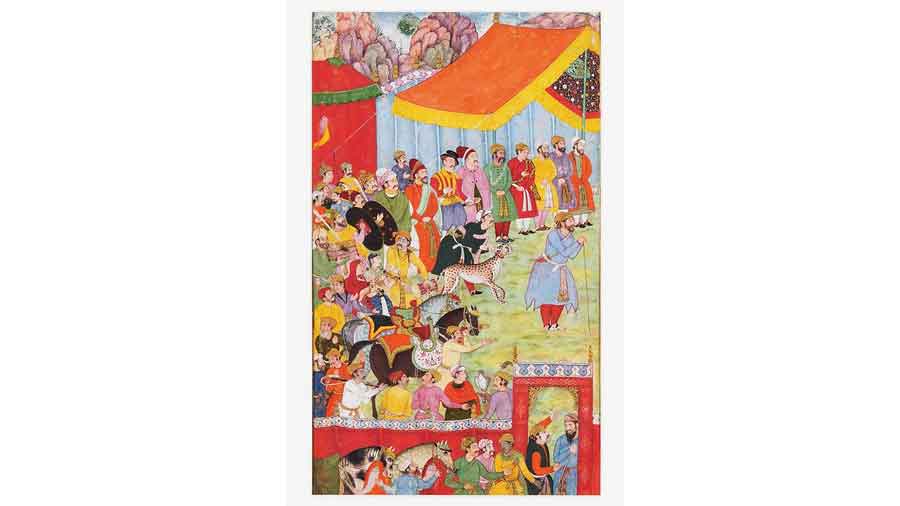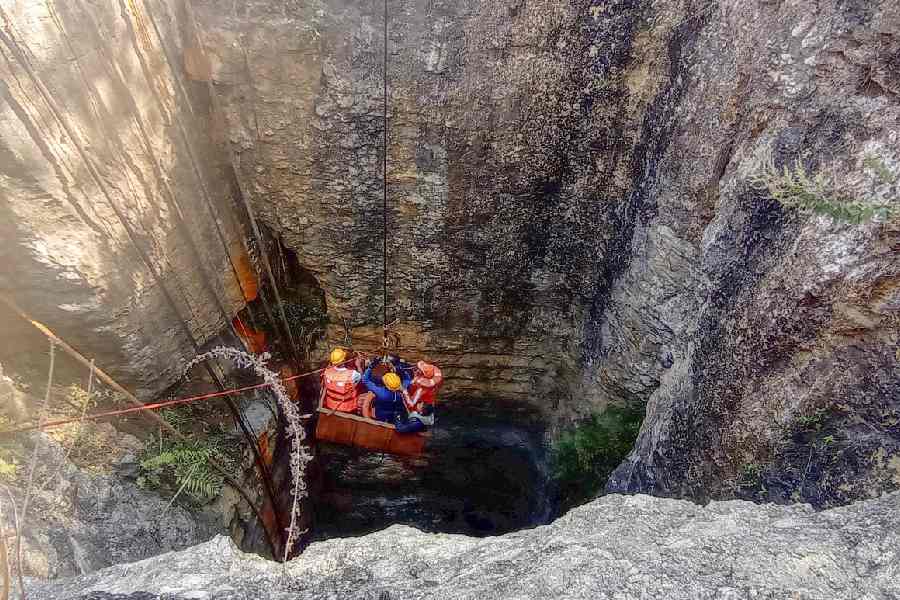We live in an Age of Extinction. Halting the extinction of species and protecting the diversity of life are widely seen as the premier environmental challenges of our times.
In this effort, India is a key arena and the site of new attempts. This may not be evident at first sight for this is a country with over 400 humans to a square kilometre. Over half the land is under the plough or, rather, the tractor.
Over the last half a century, more than five per cent of the landmass has been brought under some form of State protection as park or sanctuary or conservation area. Much larger areas still harbour a rich variety of life forms.
In the recent past, there have also been efforts to go beyond preserving ecosystems to restoring them. Prominent among these are steps to restore populations of wild birds or animals to parts of their former range. In a recent book, Rewilding: India’s Experiments in Saving Nature, Bahar Dutt catalogues a range of such initiatives. One of the most significant of these initiatives concerns the world’s smallest (and most handsome) wild pigs — the pygmy hog. Over the last quarter of a century, more than 100 of these animals have been bred at a centre near Guwahati and released into three sanctuaries.
Goutam Narayan is a veteran ecologist of the wet grasslands who oversaw and led the project for much of this time. He faced a common question in all such schemes. Is there habitat that can serve as secure home?
The pygmy hog — it has had a precarious existence — had been considered extinct and was even ‘rediscovered’ in the 1970s. Much of its extensive grassland home from Assam to Bhutan has been cleared. There are sanctuaries for the state animal of Assam, the greater one-horned rhino, where the small wild pig has found refuge. The rhino was, in conservation parlance, the umbrella species. Reserves created in its name sheltered other lesser-known creatures.
But to make it easier to hunt game or to herd cattle, many managers of grassland light fires before the rains. These may have suited large herbivores that flee the fire and return later. But the fires were fatal to pygmy hogs in many areas.
The return of the pygmy hog has helped us learn much more about the ecology of fire in the grasslands. The answer is not to abolish it but to control it. For the tapestry of life to be complete, it needs mending: the return of even this small mammal is a step in the right direction.
More recently, the debate on the re-introduction of the cheetah has taken a new turn. The last cheetahs vanished — as was shown by Divyabhanusinh — as recently as 1967. The usual narrative places their extinction in 1947 when Ramanuj Pratap Singh Deo shot dead three specimens. But possibly the latest records of its sightings were from 1967 and 1968 from Surguja district. At the time of writing, experts from South Africa and Namibia are to arrive shortly to advise on how best to re-introduce a few cheetahs to protected areas of grassland and scrub jungle.
There is here a commonality between the pygmy hog and the cheetah: both are mainly inhabitants of grasslands, not dense forests. This, in itself, makes it worth following through with such efforts.
Nature conservation in India was taken up on a war-footing around half a century ago. The tiger was the poster symbol of a nationwide effort to secure habitats and species. The vanishing tiger and the dwindling forest were the two dimensions to the government effort. Project Tiger was launched in 1973. A year before that, new legislation to protect wildlife was enacted at the Union level. In 1980, the Forest (Conservation) Act was put in place.
Today, over 160,000 square kilometres are under sanctuaries and parks. There are more than 50 tiger reserves. It is not surprising that forests were the centre of attention. Therein lies a problem. Much of
the focus in the British era was on securing forests for timber. The major works, including the great magnum opus by Harry G. Champion and S.K. Seth, saw the country in terms of different forest types.
New research led by Jayashree Ratnam from Bengaluru has re-looked at the records. She also examined pollen samples and other material remains and came to a new conclusion. Much of India — mainly in the Deccan, the Northwest and the North — was not densely forested in historic times. It was grassland and scrub jungle. The ecology and the diversity of these tracts have been much harmed by the expansion of cultivation, human settlements and mining. Their protection and restoration should be a priority.
As with fire in Assam’s grassland sanctuaries, there may be space for some human presence and use. But the study and care of the fauna and the flora of these dry and wet grasslands are the major challenges of our times. The flora and the fauna and the cycles of nature apart, they may be even more crucial as sites of study in times of rapid climate shifts.
There is little doubt that bringing back a locally extinct species can pose challenges at a human and a scientific level. The return of the wolf to the Yellowstone National Park in the United States of America faced strong opposition from ranches adjacent to the park. Labelling the predator “Saddam Hussein of the Animal World”, the ranchers of Wyoming and Montana pledged to shoot them on sight. After extensive dialogue, wolf-recovery teams were put in place for packs that entered private lands. Such initiatives may be even more critical in India where restoration entails the return of large predators. Cheetahs may prey on domestic livestock and engender conflict.
One key feature of many grasslands, both in semi-arid and high-rainfall zones, is that they are grazing grounds for cattle, goats and sheep. There is much debate on how many livestock are too many. Ecologists often point to overgrazing of the grass and the shrubs; anthropologists record co-habitation of wild plants and animals with pastoralists. The challenge is that exclusive nature protection zones with no extraction of biomass are bound to be rare. However extensive, they will still have wild animals moving in and out and some livestock grazing within. This calls for systems to redress the loss of amenity for the people as well as protection for the predator.
Keeping spaces for nature intact was the key challenge half a century ago. Now restoration may well be a key word. Bringing back stable breeding populations in biologically productive habitats will not be
easy. But it is a challenge worth taking up. Restoration is a small step. Restoring the fabric of nature may unleash new, creative energies.
The author teaches History and Environmental Studies at Ashoka University











